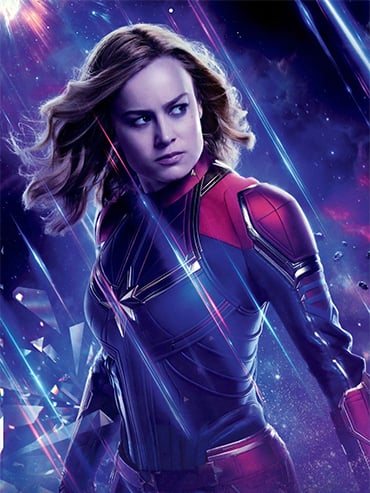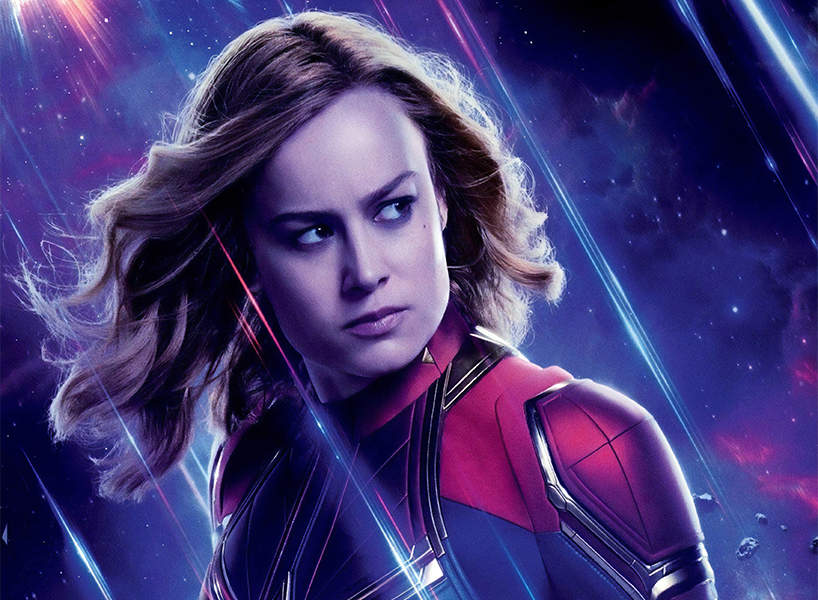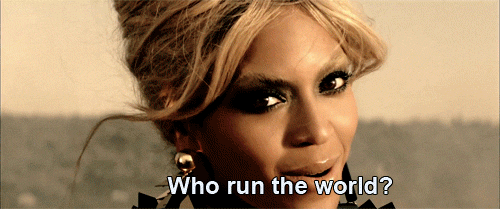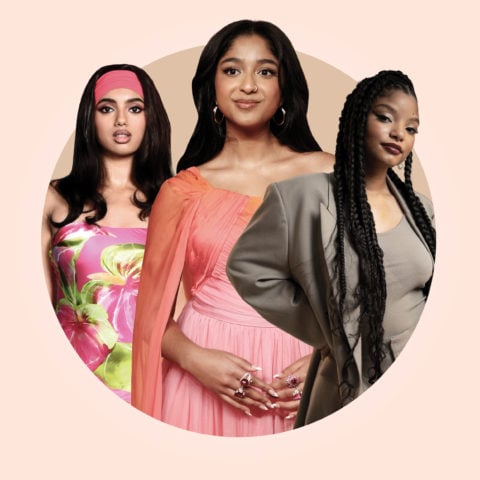It’s 2019 and We Finally Have a New Standard for How Women Are Portrayed in Action Movies
Warning: Spoilers ahead!!!


Avengers: Endgame is here, and while the fan fave film has been breaking records in the box office—racking up $1.2 billion in its opening weekend—it’s what’s happening on-screen that should be getting the accolades. After years of male-led, male dominated superhero films, it appears that the Marvel Cinematic Universe (MCU) is *finally* ready to let the ladies be portrayed for who they are: powerful, capable, badass superheroes in their own right.
ladies and gentlemen, the women of marvel.#AvengersEndGame pic.twitter.com/fHSo364AoD
— 月光 (@anajana_) April 26, 2019
Let’s get this out of the way: The film is hella long—so long that some theatres are providing intermissions. But the almost-three hours are worth it for one scene alone. During the final battle in the film, Captain Marvel (a.k.a Carol Danvers) comes back to help the Avengers retrieve the Infinity Gauntlet (a piece of jewellery that’s a pretty big deal). With Spider-Man’s Peter Parker cowering during the battle, gauntlet in hand, Danvers swoops in, seriously throwing a wrench in Thanos and his force’s plan, and grabbing the gauntlet. It’s pure chaos, with Thanos’s forces blocking the way.
Parker asks Danvers how she’s going to get through the forces when out of nowhere, the female heroes of MCU—including Gwyneth Paltrow’s Virginia “Pepper” Potts and Danai Gurira’s Okoye—appear behind her. Okoye then utters arguably the most iconic line of the film: “She’s not alone,” as the women charge into the fray alongside Danvers.
Needless to say, people were excited.
Favourite thing#AvengersEndGame pic.twitter.com/UakT7wntOs
— неЖелезная Вена (@VeinWith) April 29, 2019
Seeing these women band together to take charge and not only save the men in their lives along with, you know, the world, but also save themselves—was pretty iconic, not to mention empowering as hell. That’s because women in action films have often been relegated to one of three tropes: the side character, the damsel in distress or “the fighting f-cktoy“—a charistmatic and quick-thinking woman, but one who is inevitably meant to be looked at. And as writer Bidisha wrote in a June 2017 article for The Guardian, another mainstay of these characters is that they have no female friends or allies, inevitably putting them and their existence only in relation to men. In literally 30 seconds, Avengers: Endgame firmly smashed that truly horrible trope, and good riddance.
What made the scene even better was the fact that it wasn’t treated with shock or fanfare by the characters in the film. In the exchange between Spider-Man and Captain Marvel, it was very clear that she was the more capable of the two superheroes; she was the woman for the job at hand—no questions asked. The same can be said for the appearance of the other female superheroes, who came in, unannounced, to simply get the job done.
But this wasn’t the only standout scene that signalled a change in the universe. This empowering AF scene came after an earlier scene in which Captain Marvel came face-to-face with Thor (played by Chris Hemsworth), in an intimidation battle (that he lost, BTW), and just before the death of Iron Man’s Tony Stark (Robert Downey Jr.). Saying goodbye to her dying husband, Pepper Potts’s parting words are both sentimental and strong, as she tells Stark that he can finally rest because, in essence, she’s got this. “This,” being their family, his company, occasionally saving the universe, etc. Pretty much, she can handle all of it.
As writer Amelia Emberwing wrote for Birth. Movies. Death, Spider-Man and the other male superheroes handing off the gauntlet to Captain Marvel was a big moment; and, she writes, a new chapter. “It’s not five boys and one girl, with a bunch of tertiary characters thrown in anymore. The future of the MCU is female, and our favorite heroes—whose stories we’ve heard told over and over again—support that.”
We’re finally seeing a change in our media
And this idea of women being capable as hell is one that goes beyond just the MCU. The same weekend that Captain Marvel and her band of badass ladies were tearing up the box office, the silver screen was alight with *another* group of women seriously getting it done in an action sequence.
On April 28, HBO aired episode 3 of the final season of Game of Thrones. “The Long Night,” saw the living finally face off against the dead at Winterfell in an epic (and epically dark, literally) battle against the Night King. All our faves were there: Jon Snow, Jaime Lannister, Ser Brienne of Tarth (!!), Theon Greyjoy (RIP), Arya Stark and, of course, Lady of the North and the Queen of icy side-eye herself, Sansa Stark. And for all the hype that Jon has garnered for himself over the series—as the potential “Prince That Was Promised“— he was an A-grade dud when it came down to actually getting sh-t done.
And who came out on top? The women of the series (minus Daenerys, sorry not sorry).
Can we just take a sec and acknowledge all the women empowerment that happened this wkend in cinema?? Bravo screenwriters, directors, everyone! So very excited to see these dominant characters and heroes taking over the big and small screen in #AvengersEndgame and #GameofThrones pic.twitter.com/hSe51eIa9w
— Recruiter Christy (@ChristyRecruit) April 29, 2019
First, little Lyanna Mormont fought to the literal death, guarding Winterfell and going up against White Walkers when they inevitably reached the castle. Up until her last breath, Lady Mormont fought hard, giving it all she could to charge and inevitably kill the White Walker giant (but not before having her tiny sternum crushed by him). It was a seriously heroic move on Lady Mormont’s part. But the biggest moment of the episode—and arguably the series—came in the final minutes when Arya, after battling White Walkers head-on and getting a mid-battle pep talk from the Red Woman—stabbed and killed the Night King.
https://twitter.com/Memesanquotes/status/1122848632330498049
Sandor Clegane (a.k.a the Hound) said they couldn’t beat death, and Arya said “umm speak for yourself.” If only Ned Stark could see her now.
But FYI, women have always been capable
In both Thrones and Endgame, the ladies have always been doing the heavy work, just largely behind the scenes. While Pepper Potts was *finally* given a rescue suit and able to fight alongside her husband and the other superheroes in Endgame, she’s been a pretty big superhero and guiding force in Stark’s life since her arrival in the MCU universe.
First coming on to our screens as Stark’s assistant, Pepper Potts was TBQH always more competent than Stark himself, running his life as his assistant to literally saving his life in Iron Man 3. She was such a force of good that having her take over the position of CEO—and run Stark Industries like a #boss—seemed like a natural transition. It’s safe to say that without Pepper Potts, there’d be no Tony Stark or Iron Man.
Even Thrones‘ Sansa, who showed strength in the knowledge of her true capabilities (a.k.a girl ain’t a fighter), has long proven that she is the brains behind Winterfell, most aptly displayed when she saved Jon in season 6’s “Battle of the Bastards” and executed Reputation-level snake Littlefinger alongside her sister and BFF, Arya in season 7.
These women have been badass all along, they’re just finally getting the recognition they deserve.
And the change is happening IRL, too
Like anything good, there’s inevitably going to be backlash. And some MCU fans were disappointed in the literal 30 seconds of empowerment the Avengers women saw in the film—which, seriously?
https://twitter.com/ohsnapthanos_/status/1121665474528333825
But, thankfully, these types of opinions are becoming a minority—which is a pretty big shift considering how historically unwelcoming the MCU and sci-fi fandoms in general have been to women, especially women of colour. In August 2018, Star Wars The Last Jedi actress Kelly Marie Tran quit social media after months of racist and misogynistic harassment. While it’s important to note that not every fandom is hostile or unwelcoming towards women, Tran’s experience opened the world up to the issue of women’s acceptance in sci-fi fan culture. And the idea of fandoms being unwelcoming to women is prevalent throughout comic book and superhero culture, too, linked to a longstanding myth that women aren’t interested in comics and superheroes (which, FYI, is very untrue).
In a 2013 panel promoting PBS’s docu-series Superheroes: The Never-Ending Battle, the topic of limited female and minority representation in comics came up. In response, Gerry Conway, one of the creators behind DC character the Punisher, said readers aren’t interested in female or minority characters. A year later, DC screenwriter David Goyer suggested on the Scriptnotespodcast that Marvel’s character She-Hulk was only created as part of a male power fantasy, calling her a “giant green porn star,” which is just creepy AF.
But, that’s changing. Since 2009, New York Comic-Con has held a “Women in Marvel” panel, and seen a 62% increase in the number of female attendees. And studies from 2015 show that women are a “rising force,” in the comic book world and world of fan events, with an informal survey of 10 comic books stores by Publisher’s Weekly showing that the number of female customers ranged from 30–50% of their customer base.
And we’re starting to see this change reflected in the box office numbers, too. In its opening weekend, Captain Marvel broke records, raking in $153 million in North America and $455 million worldwide and making it the biggest global debut for a women-fronted film ever and the second-biggest debut for a super hero movie, after Avengers: Infinity War. People want to see these female-led films. And why wouldn’t they? Who doesn’t want to see a confident woman owning her power?
“I think we’re only just starting to get together these female-led superhero movies,” Avengers: Endgame actress Karen Gillan told Marc Malkin of The Big Ticket podcast. “It’s kind of a new thing and we’re living in this time of change at the moment. To see Captain Marvel do so well, I mean, I was crying in the cinema. So happy that she was smashing it and people were loving it. I think it’s time to see the Black Widow movie.”
All we have to say is:

Related:
I Can’t Stop Thinking About Captain Marvel’s Trauma
Kelly Marie Tran Breaks Her Silence on the Online Harassment That Led Her to Quit Social Media
A Trans Actor On What the First Transgender Superhero Means & What Still Needs to Change








